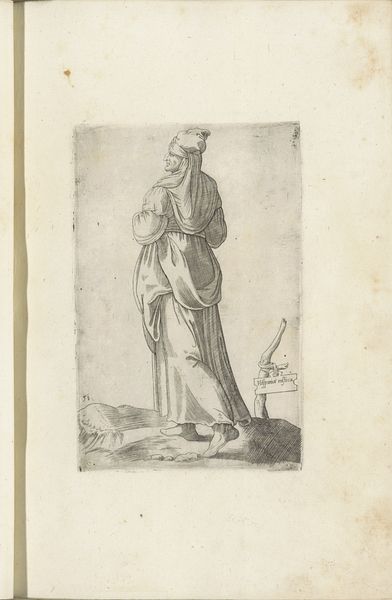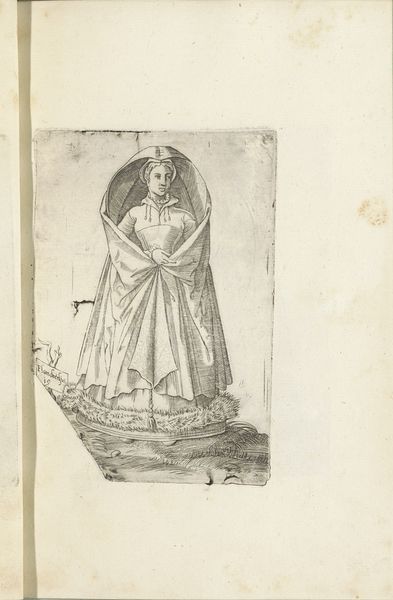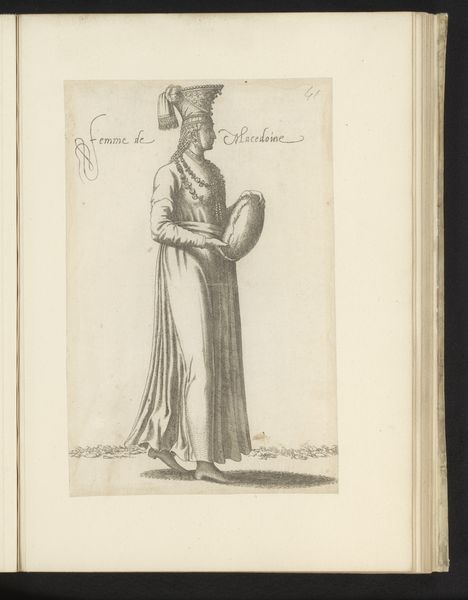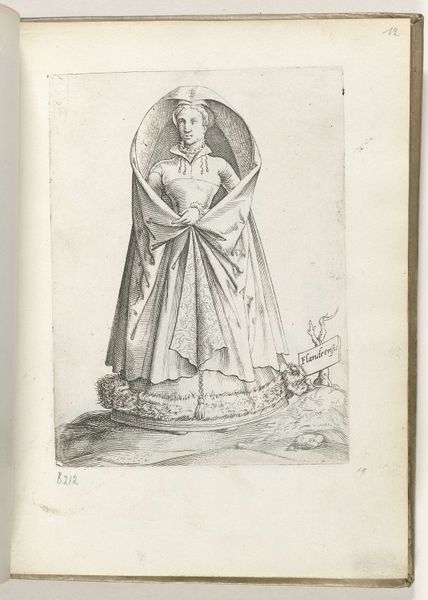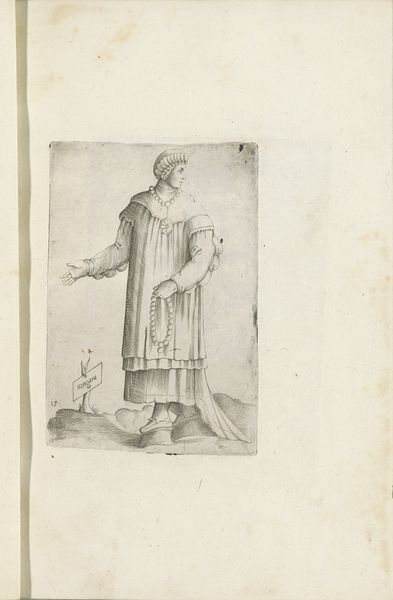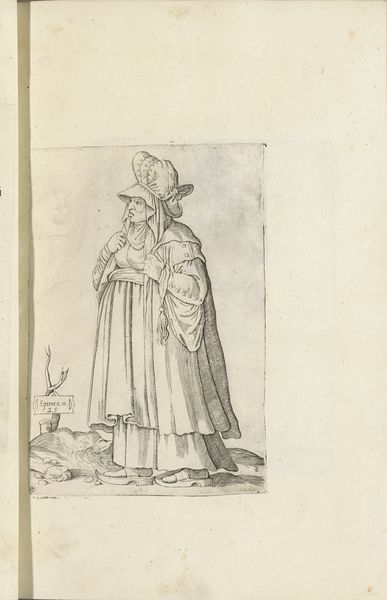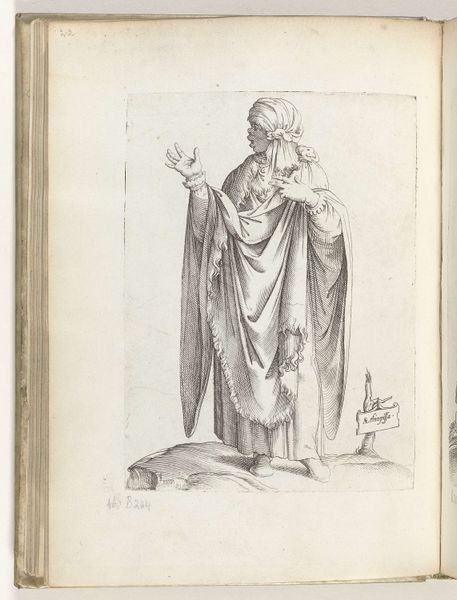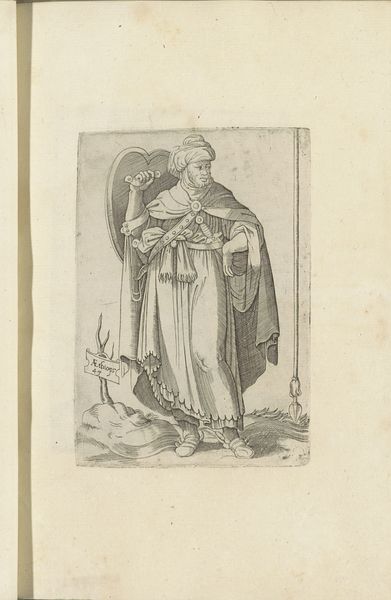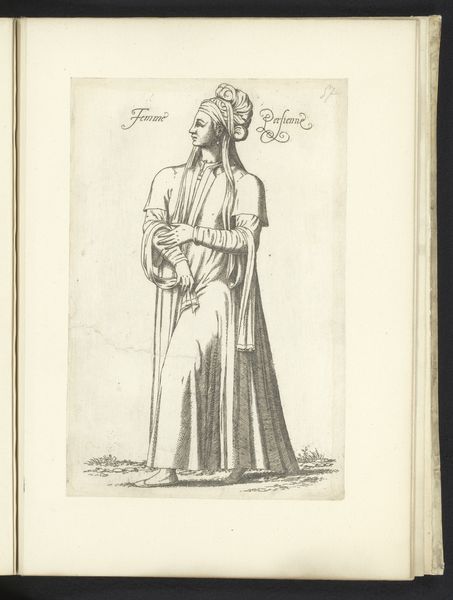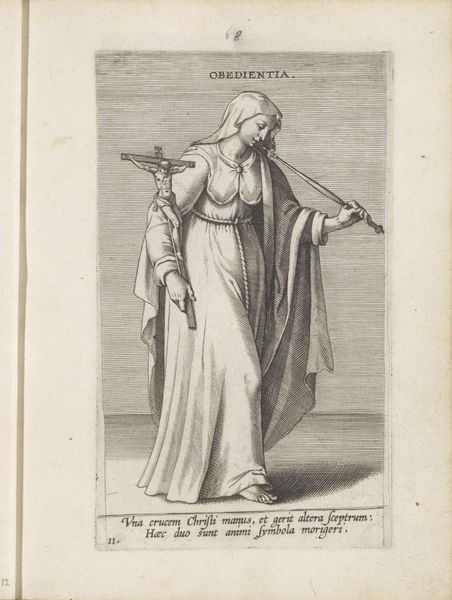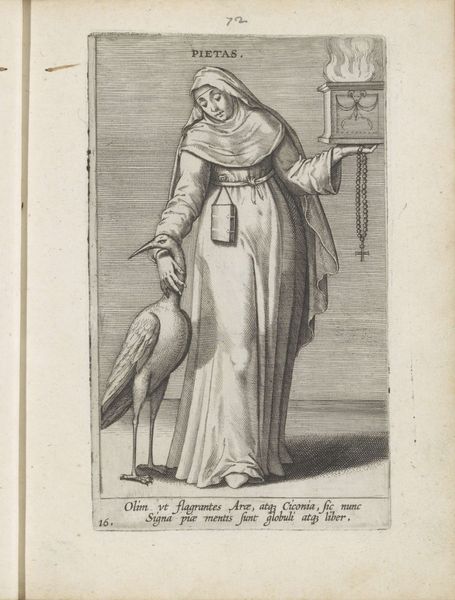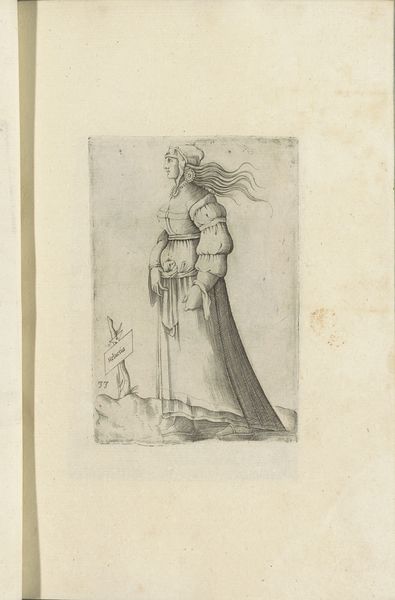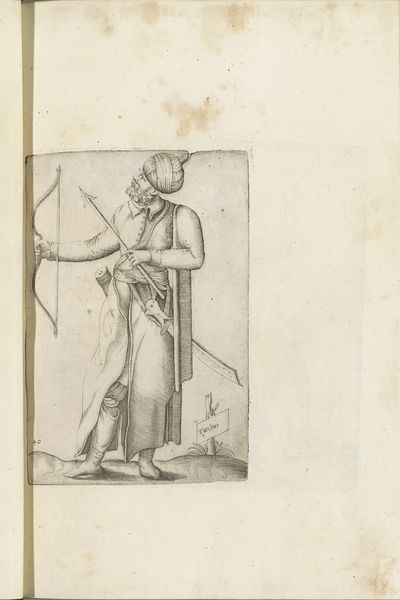
drawing, print, engraving
#
portrait
#
drawing
# print
#
figuration
#
line
#
italian-renaissance
#
engraving
Dimensions: height 265 mm, width 195 mm, height 150 mm, width 105 mm
Copyright: Rijks Museum: Open Domain
Curator: Looking at this, I am struck by the stoicism portrayed in this engraving. Editor: And I’m immediately drawn to the line work – it seems almost delicate, considering it's an engraving, a fairly robust printmaking process. This piece, titled “vrouw,” created around 1569 by Ferando Bertelli, uses a strong, yet elegant line to convey its subject. Curator: Indeed. The "woman" here isn't simply a representation but an embodiment of Renaissance ideals. Notice her serene profile, draped garments – they speak of nobility and a certain detached strength. I wonder, though, about the social implications of portraying women this way during that era? What narratives were being reinforced or challenged by images like this? Editor: Right, and if we look closely at the "means of production", we're talking about an engraving. The artist, Bertelli, likely spent hours meticulously etching into a metal plate. The material realities of that labor shape our understanding of the piece. It becomes not just an image, but an object resulting from skill, time, and a conscious choice of process, thus questioning our usual boundaries about high and low culture and the act of “making” in the context of 16th century production of artwork. Curator: That brings up another interesting point—the reproductive nature of printmaking allows this image, this ideal, to circulate more widely than a painting. How does the accessibility change the interpretation of the subject, and subsequently her representation within Italian society? Editor: I agree. By dissecting this printmaking, one can understand the work involved, and appreciate both the skilled labor involved, but also understand better how it shaped cultural and gender norms. Did Bertelli have assistants in his studio, and how did those workshop arrangements factor into the visual appearance and style that define him as an artist? Curator: Perhaps that's why this image resonates so strongly. It bridges the gap between an aesthetic ideal and the tangible means through which it was conveyed, highlighting the power of representation as an important tool for challenging the patriarchal norms. I now perceive her in terms of who might this figure really represent in that time period of history. Editor: It makes us reflect on how that material existence further shaped that historical identity, doesn't it? A fitting thing to reflect upon during the age when production meant everything for economic expansion and expression.
Comments
No comments
Be the first to comment and join the conversation on the ultimate creative platform.
